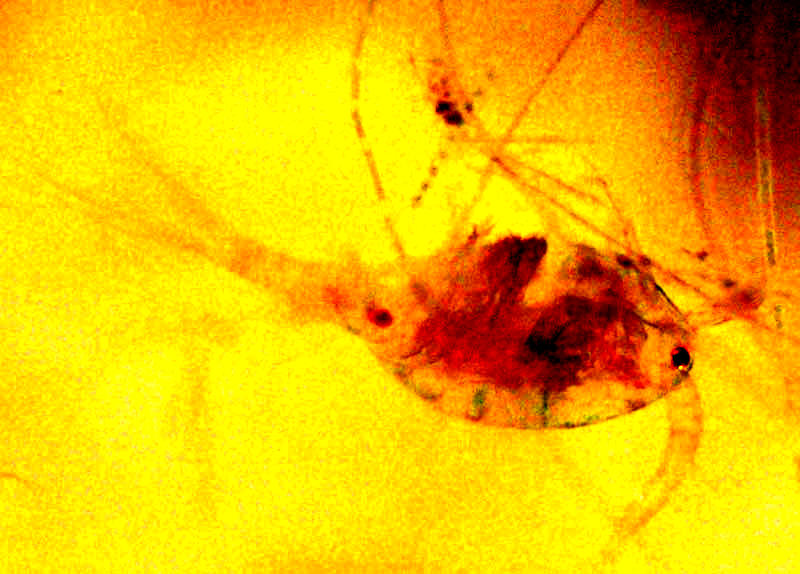Excerpts from Jim Conrad's
Naturalist Newsletter

from the December 16, 2012 Newsletter issued from the valley of the Dry Frio River in northern Uvalde County, southwestern Texas, on the southern border of the Edwards Plateau; elevation ~1750m (~5750 ft); N29.62°, W99.86°; USA
CYCLOPS
While scanning a drop of water from the little Dry Frio River behind the cabin a ghostly creature with a mostly transparent body jerked across the field of vision, as shown above.
This tiny creature, less than 1/25th of an inch long (1mm), was one of over a hundred species of cyclopes, genus Cyclops -- cyclopes is the plural for cyclops -- easily recognizable as a group by the single eyes at the tips of their heads. The eye can be either black or red, and you can see that ours was red eyed. The other red spot on the tail is where mature females bear conspicuous, frankfurter-shaped egg sacs, so maybe that's where this individual's egg sacs either are about to grow, or the eggs have just been shed. Arising near the eye you can see two sizable, ram-horn-like antennae. The rear end divides into the "caudal fork," the purpose of which I can't find explained, though many crustaceans bear more or less forked rear ends.
Cyclopes belong to the Animal Kingdom, the Arthropod Phylum, the Crustacean Subphylum (along with crayfish, lobsters and crabs), the Maxillopod Class (along with barnacles and copepods, all having short bodies and lacking legs), and the Copepod Subclass (the 13,000 copepod species usually being only 1/25th to 1/50th inch long (1-0.5mm) with teardrop-shaped bodies and large antennae).
The more than 400 species of the genus Cyclops occur nearly worldwide, mostly in freshwater but also in brackish. They live along vegetated banks of stagnant and slow-flowing bodies of water, feeding on small fragments of plant material, animals and carrion, and swimming with jerky movements. Sometimes they deal with harsh conditions by forming a cloak of slime. Average lifespan is about 3 months.
Though our little Dry Frio River seems to provide ideal habitat for Cyclopes, I've seen only this one individual. Probably during warmer weather they're much more common.